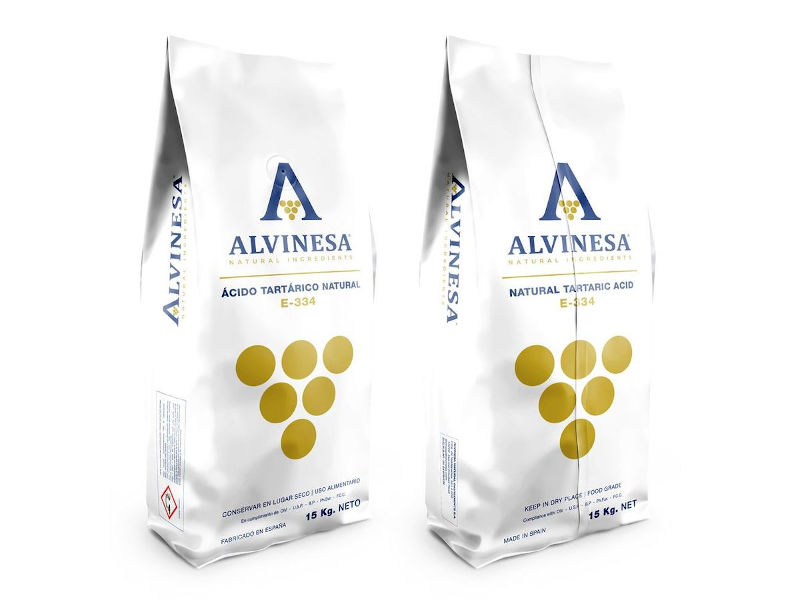Natural Tartaric Acid

Natural tartaric acid derived from grapes offers advantages over its synthetic counterpart. Its extraction from byproducts of the wine industry promotes sustainability and the circular economy.
Furthermore, it better preserves the organoleptic properties of the final products, providing a more authentic sensory experience.
It is presented in the form of a white powder, odorless, and with a pleasant acidic taste.
Tartaric acid is primarily used in the food industry as an acidifier, emulsifier, and natural preservative. It is found in a wide variety of products, such as:
- Jams, ice creams, jellies, juices, preserves, and beverages: It provides an acidic taste and helps preserve foods for longer periods.
- Wine: It is used as an acidity regulator, especially in wines with low natural acidity.
- Carbonated water and soft drinks: It is responsible for the effervescent effect and the acidic taste that characterizes these beverages.
- Bakery products: It acts as an emulsifier and preservative.
- Candies and sweets: It provides an acidic taste, regulates pH, acts as a preservative, and provides shine.


- Pharmaceutical industry: It is employed as an excipient, pH regulator, chelating agent, antioxidant, and effervescent agent. It is used in the production of effervescent tablets, granules, powders, and tablets.
- Infant formula: It is used in small amounts in infant formula as an acidity regulator, improves mineral absorption, flavoring agent, and preservative.
- Cosmetics: Tartaric acid is used in the cosmetic industry for its exfoliating, brightening, antioxidant, astringent, and chelating properties. It can be found in a variety of cosmetic products, such as creams, toners, serums, exfoliants, and masks.
- Enology: Tartaric acid is an essential compound in winemaking that contributes to acidity, taste balance, stability, color, and overall wine quality.
- Construction industry: Tartaric acid is used as a retardant in gypsum, cement, and plaster. Additionally, it facilitates the handling of materials.
In summary, tartaric acid is a versatile ingredient with a wide range of applications in different industries.
Tartaric acid should be listed in the ingredient list of food products. It can be found as tartaric acid or with the E334 code.
Other names:
- (R,R)-Tartaric acid
- 2,3-Dihydroxybutanedioic acid
- Dihydroxybutanedioic acid

Tartaric acid is ideal for a variety of applications
Cosmetics
Plasters

Candies and sweets
Medicines
Carbonated beverages
Bakeries
Ice creams
Wines



